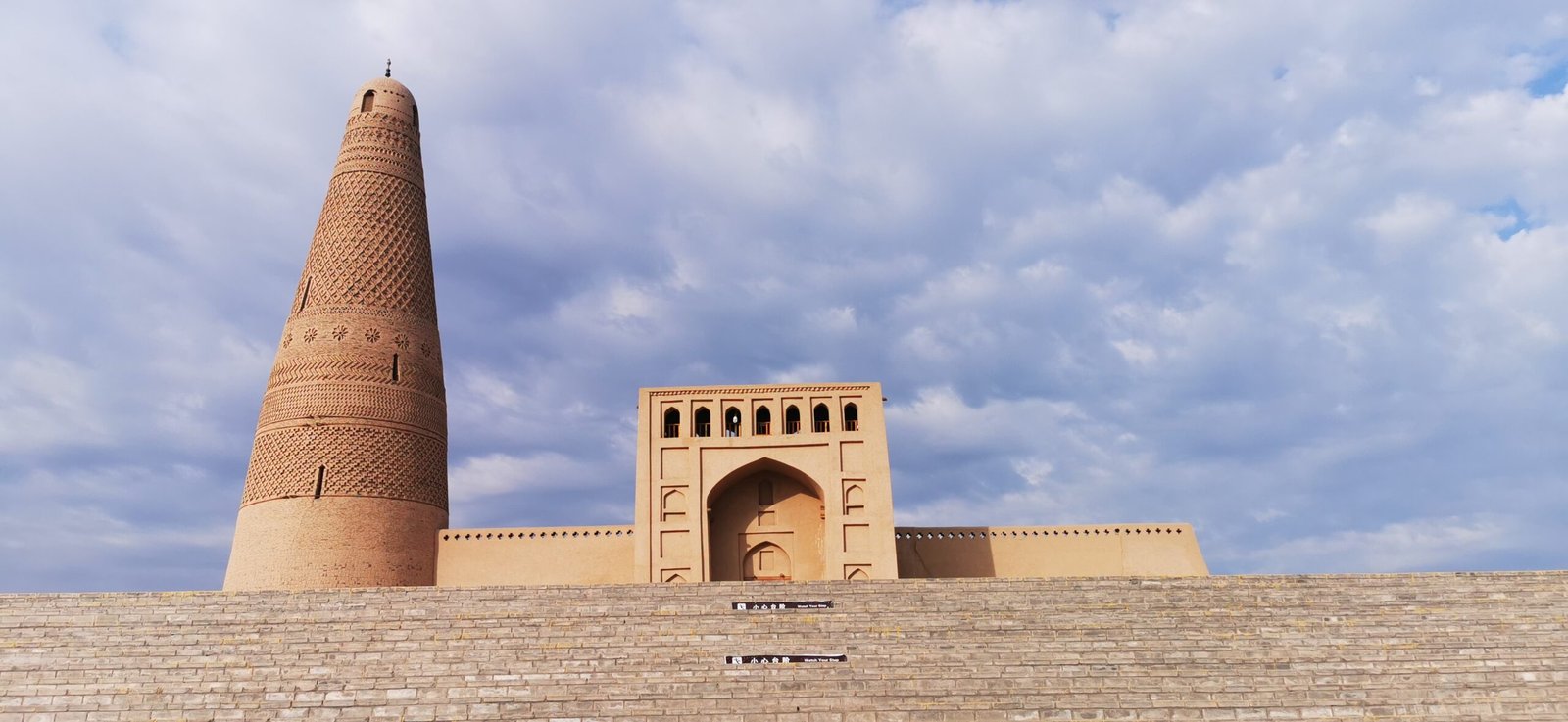Where is Chongqing?
A Mega City in Southwest China
Chongqing, one of China’s four direct-controlled municipalities, is a sprawling metropolis in the country’s southwestern region. Known as the “Mountain City” due to its undulating terrain, Chongqing has become a symbol of modern Chinese urban development. The city boasts a population of over 30 million, making it one of the largest cities in the world by population.
Strategically positioned at the confluence of the Yangtze and Jialing Rivers, Chongqing has been a transportation and economic hub for centuries. Its prominence dates back to its role as the wartime capital during the Sino-Japanese War. In modern times, it has transformed into a vibrant urban center, showcasing a seamless blend of historical significance and contemporary innovation.
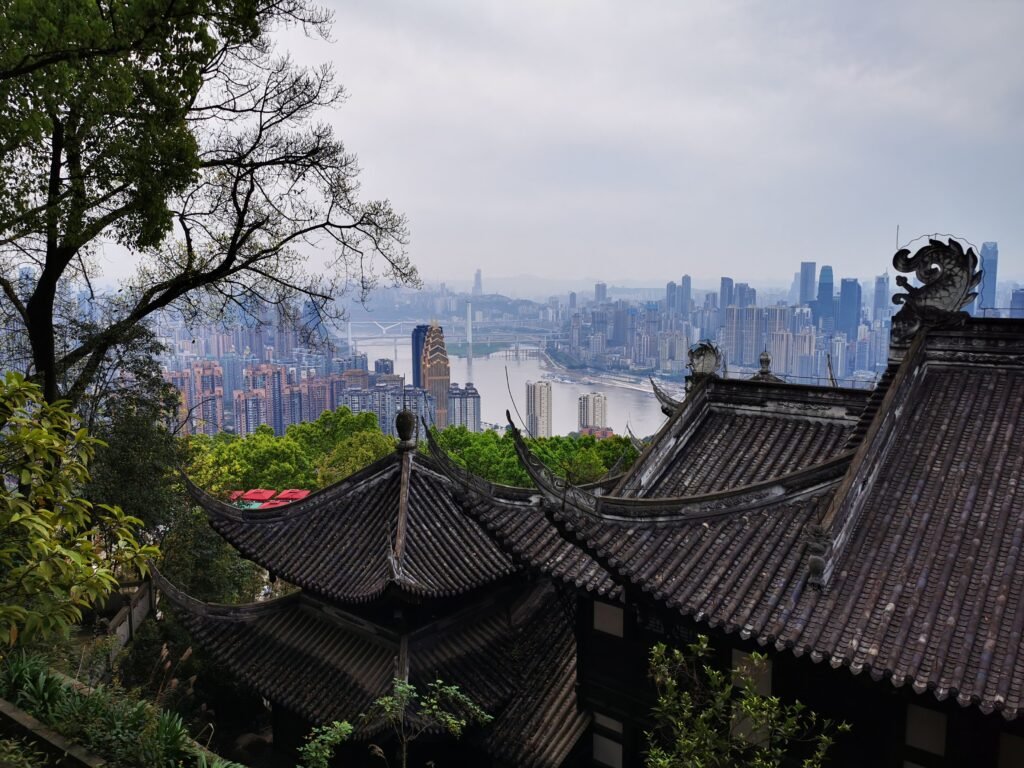
A New Rising Famous Tour Destination on the Internet
In recent years, Chongqing has become a hotspot for tourism, fueled by its unique architectural and natural landscapes. Social media has played a significant role in popularizing the city, with images and videos of its architectural marvels, such as the Hongya Cave, Liziba Monorail, and the Yangtze River Cableway, captivating millions. Tourists are drawn to the city for its one-of-a-kind infrastructure, dynamic culture, and, of course, its iconic spicy hotpot cuisine. These factors have propelled Chongqing into the spotlight as one of China’s most photogenic and culturally rich cities.
Characteristic Urban View of Chongqing
Hill and River Restrictions Shape Chongqing’s Look
Chongqing’s geographic features have left a lasting impact on its urban planning. The city’s layout follows the natural contours of its rugged terrain, resulting in a multi-level cityscape. Unlike flat cities, Chongqing’s districts often span across various elevations, creating a unique urban environment. The rivers add another dimension, as they define the boundaries of neighborhoods and serve as vital transportation routes.
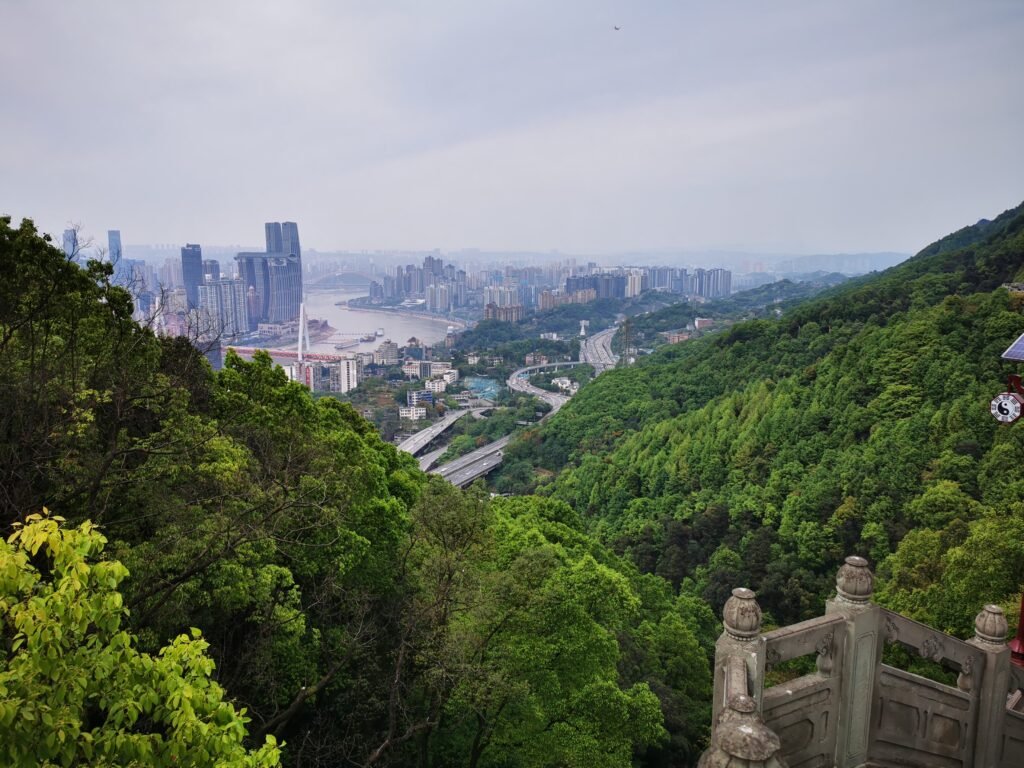
One of the city’s most iconic characteristics is its verticality. Skyscrapers are perched on cliffs, and narrow streets zigzag up steep hillsides. The view from elevated platforms, such as Eling Park or the observation deck at Raffles City, offers a breathtaking panorama of the city’s interwoven urban and natural elements.
Chongqing’s Distinctive Built Environment Among Hills
The dramatic interaction between architecture and terrain in Chongqing sets it apart from other Chinese cities. High-rise buildings often have multiple ground-level entrances at different elevations, a necessity in a city where slopes dominate. This adaptability is not only practical but also contributes to the city’s distinctive aesthetic.
At night, Chongqing transforms into a glittering wonderland. The city’s illuminated bridges, glowing skyscrapers, and reflections on the Yangtze and Jialing Rivers create a visual feast. Landmark areas such as the Hongya Cave become particularly magical, attracting visitors eager to experience the fusion of tradition and modernity.
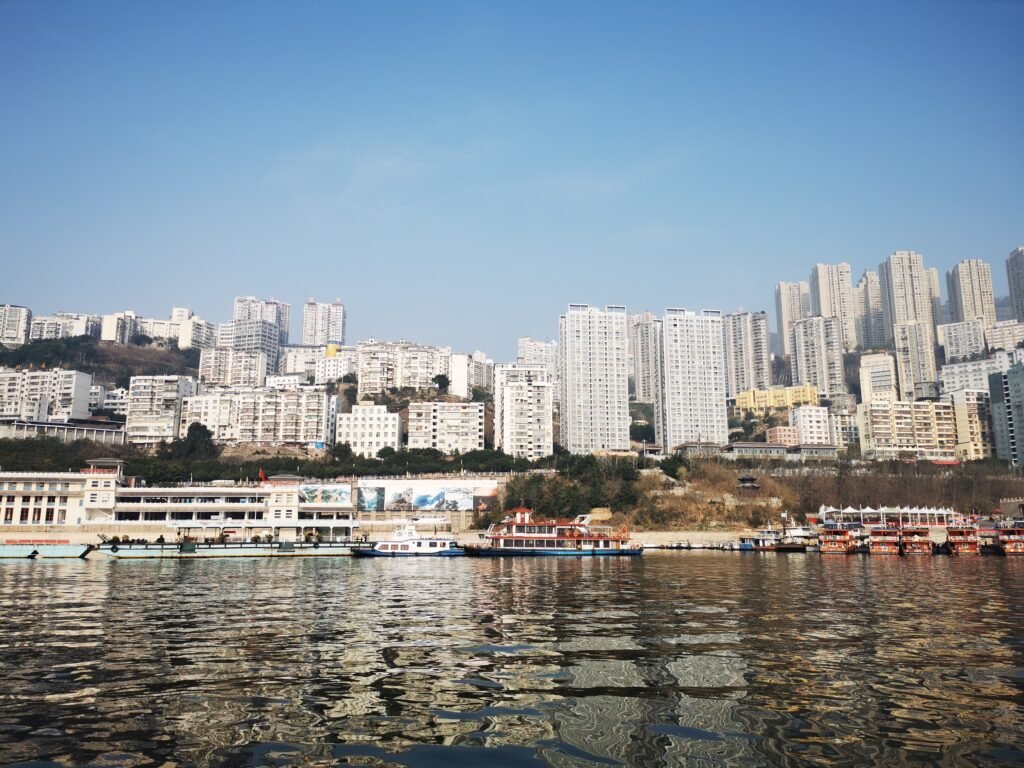
How Does Chongqing Adapt Road Networks to the Mountains?
The Fast Lanes Along and Across Rivers
Chongqing’s mountainous terrain poses challenges for transportation, but innovative road networks have turned these obstacles into opportunities. Elevated expressways, such as the Yuzhong Riverside Expressway, provide seamless connectivity along the riverbanks, reducing travel time and offering scenic drives. These roads are crucial lifelines for commuters, connecting different parts of the city with efficiency.
Bridges and Tunnels – Necessities for Chongqing Drivers
Nicknamed the “City of Bridges,” Chongqing is home to over 10,000 bridges, each reflecting unique architectural styles. Notable examples include the Chaotianmen Bridge, one of the longest arch bridges in the world, and the Qiansimen Bridge, which doubles as a pedestrian walkway and a key transportation route. These bridges symbolize the city’s ability to overcome its natural barriers.
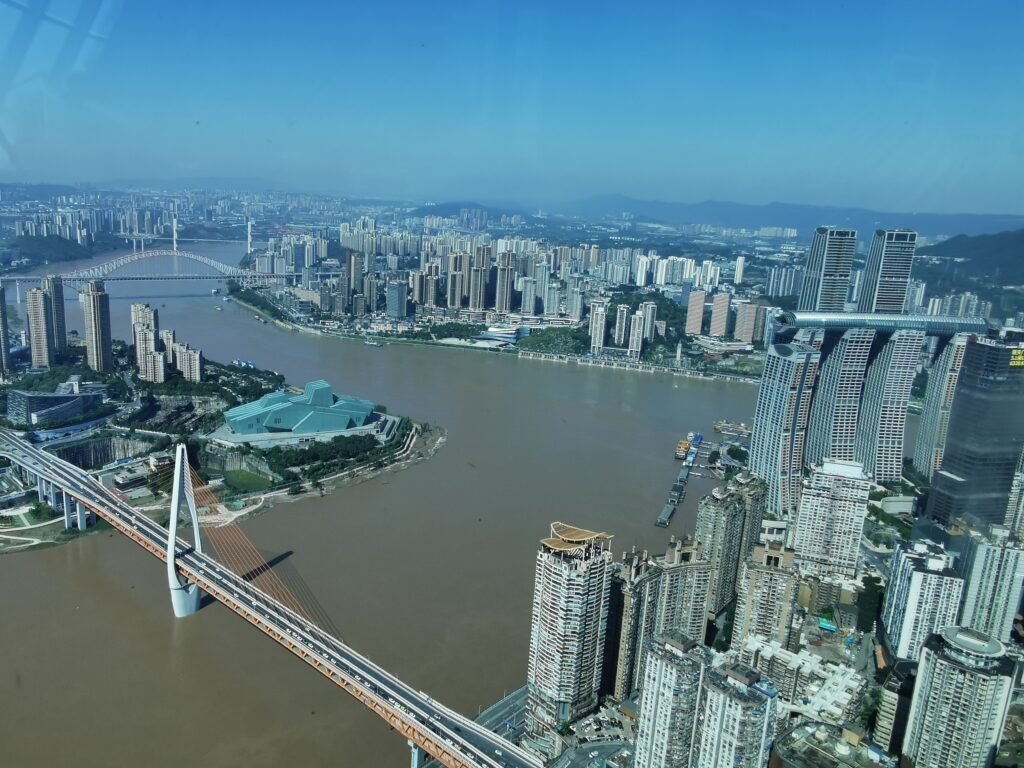
Equally vital are Chongqing’s tunnels, which carve through hills to create shortcuts for drivers. The city’s extensive tunnel system minimizes the impact of its challenging topography, allowing for more direct routes between key areas. These structures exemplify Chongqing’s engineering ingenuity, ensuring its residents can navigate the city with ease.
Historical Winding Lanes Distributed in the Old Urban District
While modern infrastructure dominates much of Chongqing, its historical districts preserve the charm of the past. Narrow, winding lanes in areas like Ciqikou and Shibati reflect the city’s traditional urban fabric. These alleys, designed to follow the natural contours of the terrain, offer a glimpse into Chongqing’s history and cultural heritage.
The Extreme Usage of Space in Chongqing Architectures
Chongqing Buildings Spreading Along Hills
Land scarcity and topographical challenges have led to innovative architectural designs in Chongqing. Buildings are often constructed to maximize the available space along hillsides. Hongya Cave is a prime example, with its multi-story structure seamlessly integrated into a cliff, combining retail, dining, and cultural spaces in one iconic location.
Every Architecture Is Adapted to Multiple Elevations
Chongqing’s unique architectural approach extends to its residential and commercial buildings. It is not uncommon for a single structure to have entrances on different levels depending on the street. For instance, a building’s main entrance might be on the fifth floor when accessed from a higher road but on the first floor when approached from a lower level. This adaptability highlights the city’s ingenuity in overcoming its geographical constraints.
Architectures Dance With Road Networks
One of the most famous examples of Chongqing’s architectural adaptability is the Liziba Monorail Station. This extraordinary structure allows a monorail to pass directly through a residential building, a testament to the city’s ability to harmonize urban infrastructure with its built environment. Such features have become defining elements of Chongqing’s identity, demonstrating how architecture and engineering can coexist with natural landscapes.
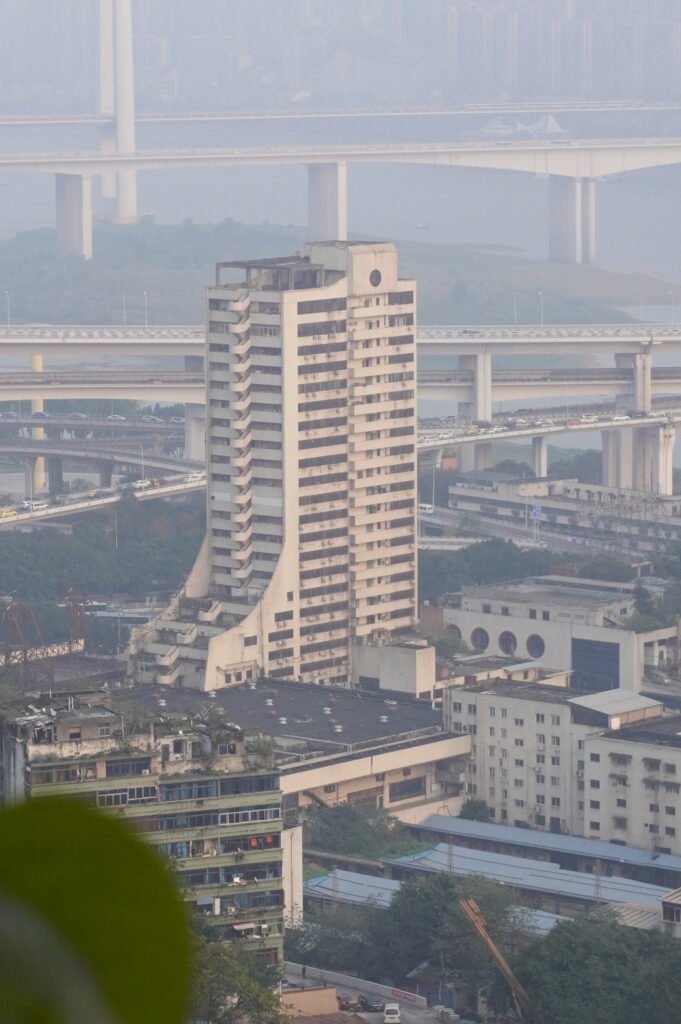
Why Is Chongqing’s Architecture So Spectacular?
Chongqing’s distinctiveness lies in its harmony between natural and man-made environments. The city’s architects and engineers have not only overcome the challenges posed by its terrain but have also embraced these challenges as opportunities for innovation. The result is a cityscape that is as functional as it is beautiful, with each structure telling a story of resilience and creativity.
Conclusions
Chongqing stands as a remarkable example of how urban design can adapt to and even celebrate the natural environment. Its mountainous terrain and riverine landscape have shaped every aspect of the city, from its road networks to its architectural marvels. For travelers, Chongqing offers an unforgettable experience, blending scenic beauty with a vibrant urban culture.
Whether you’re drawn to its photogenic landmarks, rich history, or innovative infrastructure, Chongqing has something for everyone. It is a city that defies convention and inspires awe, proving that even the most challenging environments can become thriving metropolises. For architects and urban planners, Chongqing is a living testament to the power of creativity and determination in shaping the future of our cities.

